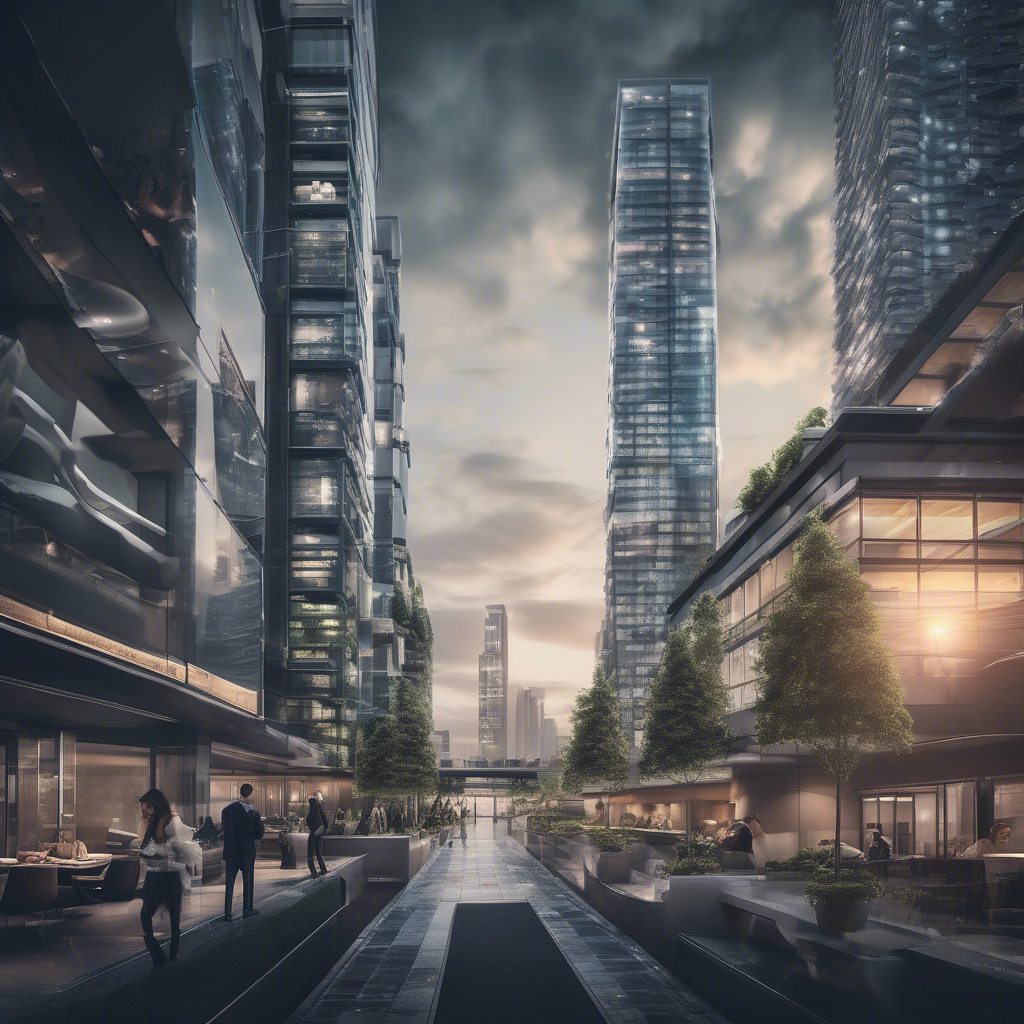The Future of Urban Living: Smart Cities and Lifestyle Innovations

As cities around the globe continue to grow, the concept of urban living is evolving in unprecedented ways. With the rise of smart cities and lifestyle innovations, our future urban landscapes promise to be more efficient, sustainable, and enjoyable. This transformation is not just about technological advancements; it’s about reimagining how we live, work, and play in urban environments.
Urban living today is at a crossroads, combining the necessity of sustainable urban development with the allure of cutting-edge technology. Cities are becoming smarter, not just in terms of infrastructure but in enhancing the quality of life for their residents. This article explores the future of urban living, diving into smart city technology, innovative urban planning trends, and the digital infrastructure shaping our cities. Readers will discover real-world applications of these concepts and learn how they are redefining urban life.
Smart City Technology: The Backbone of Future Urban Living
Smart city technology is rapidly becoming the backbone of modern urban environments. By leveraging the Internet of Things (IoT), big data, and artificial intelligence, cities can optimize resources, reduce waste, and improve the quality of life for residents. For example, Barcelona has integrated smart sensors in waste bins to optimize garbage collection routes, reducing costs and emissions.
One of the key components of smart cities is intelligent transportation systems. These systems use real-time data to manage traffic flow, reduce congestion, and improve public transportation services. Singapore is a leader in this field, utilizing a comprehensive network of sensors and data analytics to enhance its public transit system, making urban commuting more efficient and reliable.
Smart city technology also extends to energy management. Cities like Amsterdam have implemented smart grids that allow for efficient energy distribution and consumption. These grids not only support renewable energy sources but also enable residents to monitor and adjust their energy usage in real time, contributing to sustainable urban development.
Innovative Urban Planning Trends
Urban planning is undergoing a paradigm shift as cities strive to become more livable and sustainable. One notable trend is the focus on mixed-use developments, which integrate residential, commercial, and recreational spaces. This approach reduces the need for long commutes and fosters vibrant community life. For instance, the Hudson Yards project in New York City exemplifies this trend, blending apartments, offices, retail, and green spaces.
Another trend is the incorporation of green infrastructure. Cities are increasingly investing in parks, green roofs, and urban forests to combat the urban heat island effect and improve air quality. The High Line in New York City is a prime example of how repurposing old infrastructure into green spaces can transform urban areas.
Urban planners are also prioritizing pedestrian-friendly designs. By creating walkable neighborhoods with access to public transit and cycling paths, cities are promoting healthier lifestyles and reducing reliance on vehicles. Copenhagen is often cited as a model city for its extensive cycling infrastructure and commitment to pedestrian-friendly urban design.
Digital Infrastructure: Enabling Future Lifestyle Innovations
The development of robust digital infrastructure is paramount in supporting future lifestyle innovations. High-speed internet connectivity, 5G technology, and smart devices are foundational elements that enable smart city initiatives. Seoul, South Korea, is at the forefront, offering free public Wi-Fi across the city, facilitating seamless connectivity for residents and visitors alike.
Digital infrastructure is also pivotal in the realm of healthcare. Smart health technologies, such as telemedicine and remote monitoring, are becoming integral to urban living. For example, in Toronto, the MaRS Discovery District is pioneering digital health solutions that allow for more accessible and efficient healthcare services.
Moreover, digital infrastructure supports the growing trend of remote work and digital nomadism. As more people seek flexible work arrangements, cities need to provide the necessary technology and spaces to accommodate this shift. Co-working spaces, like WeWork, are thriving in urban centers, offering state-of-the-art facilities for professionals.
To further explore the fascinating world of smart cities and lifestyle innovations, consider watching our accompanying video. This video delves into real-life examples of smart city projects and provides visual insights into how these innovations are transforming urban living.

Frequently Asked Questions
What are smart cities?
Smart cities utilize technology to enhance urban living through efficient resource management, improved infrastructure, and increased connectivity. Examples include IoT-based traffic systems and smart grids for energy management, as seen in cities like Barcelona and Amsterdam.
How does smart city technology contribute to sustainability?
Smart city technology promotes sustainability by optimizing resource use and reducing environmental impact. Intelligent transportation systems, for instance, minimize traffic congestion and emissions. Additionally, smart grids support renewable energy integration, enhancing sustainable urban development.
What role does digital infrastructure play in smart cities?
Digital infrastructure is crucial for smart cities, enabling seamless connectivity and supporting innovations like telemedicine and remote work. High-speed internet and 5G networks are essential components, providing the foundation for smart technologies to thrive, as demonstrated in Seoul’s city-wide Wi-Fi initiative.
How are urban planning trends changing city landscapes?
Urban planning trends focus on mixed-use developments, green infrastructure, and pedestrian-friendly spaces. Projects like New York’s Hudson Yards showcase integrated living environments, while cities like Copenhagen lead in creating bike-friendly urban areas, enhancing community life and sustainability.
What are some examples of future lifestyle innovations in smart cities?
Future lifestyle innovations include smart homes, telemedicine, and remote work flexibility. Technologies such as AI-driven home automation and digital health platforms are becoming widespread, supported by robust digital infrastructure, as seen in urban centers like Toronto’s MaRS Discovery District.
Conclusion
The future of urban living is being reshaped by smart cities and lifestyle innovations. As cities integrate advanced technologies and adopt sustainable practices, they are not only enhancing infrastructure efficiency but also improving the quality of life for their inhabitants. From intelligent transport systems to digital healthcare, these innovations are paving the way for a more connected and sustainable urban experience.
To harness these opportunities, cities must continue to invest in digital infrastructure and adopt forward-thinking urban planning strategies. Residents and policymakers alike should embrace these changes, advocating for developments that prioritize sustainability, connectivity, and community well-being.
For those interested in exploring the possibilities, start by familiarizing yourself with local smart city initiatives and consider how you can contribute to sustainable urban development. Stay informed and engaged with urban planning trends to ensure that your city remains a thriving, innovative hub.
Further Reading
- Exploring the Role of AI in Urban Planning
- Sustainable Architecture: Designing the Future of Cities
- The Impact of 5G on Urban Connectivity




